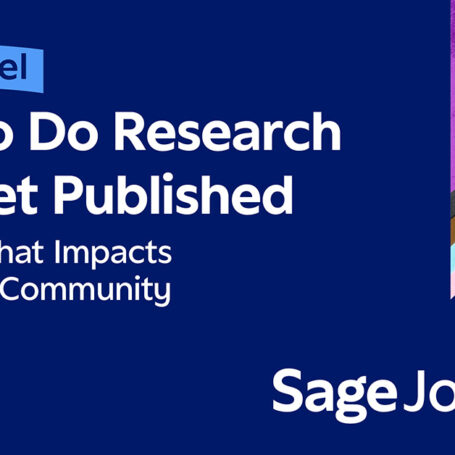Restructuring Interrelated School Systems: Reflections on ‘Reimagining Schools’
COVID-19 has illuminated an array of pre-existing inequalities in American society today. “Reimagining Schools” is the first talk in the series “Reimagining Social Institutions” hosted by the Social Science Research Council and SAGE Publishing. The discussions acknowledge that human behavior and outcomes are shaped by historical, political and social forces, and that lasting change today can only come from tackling the existing structures themselves. With racial and socioeconomic inequality, opportunity divides and pervasive social unrest, the social sciences need to rise to the occasion to help reimagine the existing social institutions to make them better, more accessible and more equitable places. This series focuses on schools, whether it be K-12 or higher education at universities.
The second event of the Reimagining series, Reimagining Social Institutions, takes place on December 17 at noon ET. You can register for the event HERE.
Alondra Nelson, whose achievements include currently heading the Social Science Research Council, moderated the presentations by University of California, Berkley sociologist Prudence L. Carter, author of explorations of education Nasima Hassan and Amherst College American studies professor Pawan Dhingra in an online conversation to reimagine the anchor of social life that is a school. What if we didn’t know what a classroom was, or how people should behave in school? What if we didn’t know what schools look like at all? These were some of the jumping off points that sparked the conversation.
A key takeaway that I took away was the fact that the speakers were urging schools towards an existence as entire welfare social systems. Calls to redefine schools immediately included the need to redefine and improve other facets of our society, specifically food safety, affordable healthcare, secure jobs for parents and safe housing for families. And I agree. As Carter stated and Hassan and Dhingra echoed, no aspect of society such as school systems is sufficient to address socioeconomic and racial inequality in the interconnected systems of our world today. As such, the digital divide and education loss that has gained attention amidst the pandemic, the continued segregation and class divide amongst students and schools, the perpetuation of biased, monotoned lessons on history and society, and the increasing mental health issues amongst students as young as elementary grade are all problems that cannot be solved until schools are reimagined as places of collaborative empowerment, with a special focus on the human faces, the teachers and students and their well-being and growth.
From the critiques and suggestions made by the panelists, I understand that they all seek to redefine school systems to recognize and empower educators and teachers, nurture, support and maintain the individual focus on student growth and well-being, and redefine school curriculums to educate students beyond the technical subjects and to encompass emotional growth, compassion and empathy.
But these improvements must coincide with other structural changes, too. As we continue to support the individual growth of students, we need to encourage students and children to also consider the potential contributions that they can make to their communities and those they care about. Through individual and group learning, students can and should be equipped with the knowledge, confidence and emotional awareness to consider their societies in their learning journeys. This focus on individual potential extends to teachers, too. As teachers construct curriculums and classes, they must think about what lessons they want to instill, why they care about them, and how these will connect with their students and greater communities.
By encouraging meaningful connection between a teacher and their student groups, we can potentially foster greater collaboration on the two levels and occupations and raise awareness on the interconnectivity of students and teachers in an empowering and confidence-boosting manner. Simultaneously, by authentically connecting with their students, teachers will have a better time structuring courses and learning programs knowing what will work best for specific groups and students.
Moreover,
Dhingra’s point on opportunity hoarding and the increased anxiety surrounding higher education and learning must be addressed. As Dr Carter said, higher education is guilty of perpetuating such anxieties and stress through creating a sense of scarcity. We need to reassess what it means to excel in school and what it means to do well academically. “Success” is still defined in very black and white terms in American education systems. Universities and higher education can help diffuse that tension and help contribute to a sense of academic access for all by breaking down elitist admissions processes, perhaps focusing their efforts on trying to create a dynamic and diverse class of students as a whole. I’m not saying that admissions should not recognize the individual merits and accomplishments of students and reward their hard work.
Rather, I suggest that universities combine this pre-existing system with a greater focus on the potential for a bonded group of students. In turn, university graduating classes can benefit from an even greater collaborative environment with support from their peers, and universities are providing positive learning spaces that foster connectivity beyond graduation.
The other key point to address are what are often skewed lessons, ingrained in historical biases and related to this, the lack of emotional stimulation for students at all ages in school. Dr Hassan acknowledged the pre-existing body of research and pedgagogy that already exists that can help us shape teacher training and education programs at all levels. We are rich in research and literature that can shape teaching to be more people-centered. She also acknowledged the need for diverse staff in schools, embedded racial literacy as important as literacy with the teachers and staff being the first points to learn from on diversity and equity in schools. Western education systems are heavily based upon the celebration of European, western and white work born under the trend of the Enlightenment. Instead, we must remember to look at how multiple views and lessons on history can enhance teaching. We can celebrate the positive features of our history and even have a more positive understanding of our roles in the globe with the introduction of voices from non-western, underrepresented groups.
Leaving the talk, I was left agreeing with the majority of what was discussed. Nonetheless, the discussion left me thinking about what might be making the process of improving the American school system so difficult. It is a double-edged sword. Competitivity can create excellence but can exclude, and from the higher education level to elementary school, school needs to be about more than learning STEM and social science and humanities subjects. Schools for students of all ages needs to be a place where people can grow intellectually, morally, emotionally and positively. Schools are cultural agents, as Dhingra stated, and we cannot forget of the institution’s role in improving or inhibiting an individual and community’s collective growth.
As such, schools should not be viewed as isolated players, but understood while situated in the greater context of the societies within which they exist. Focusing on the human players that are teachers, students and staff, schools must be celebrated and elevated as spaces where the breadth of culture, community and diversity that abound through and from them can prosper.


























































































